
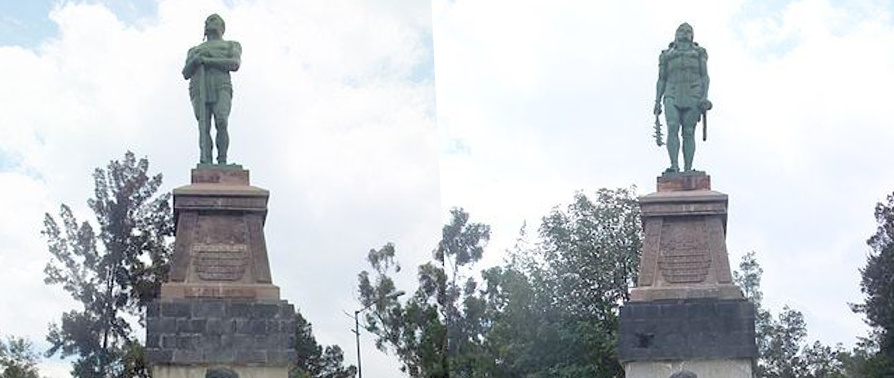
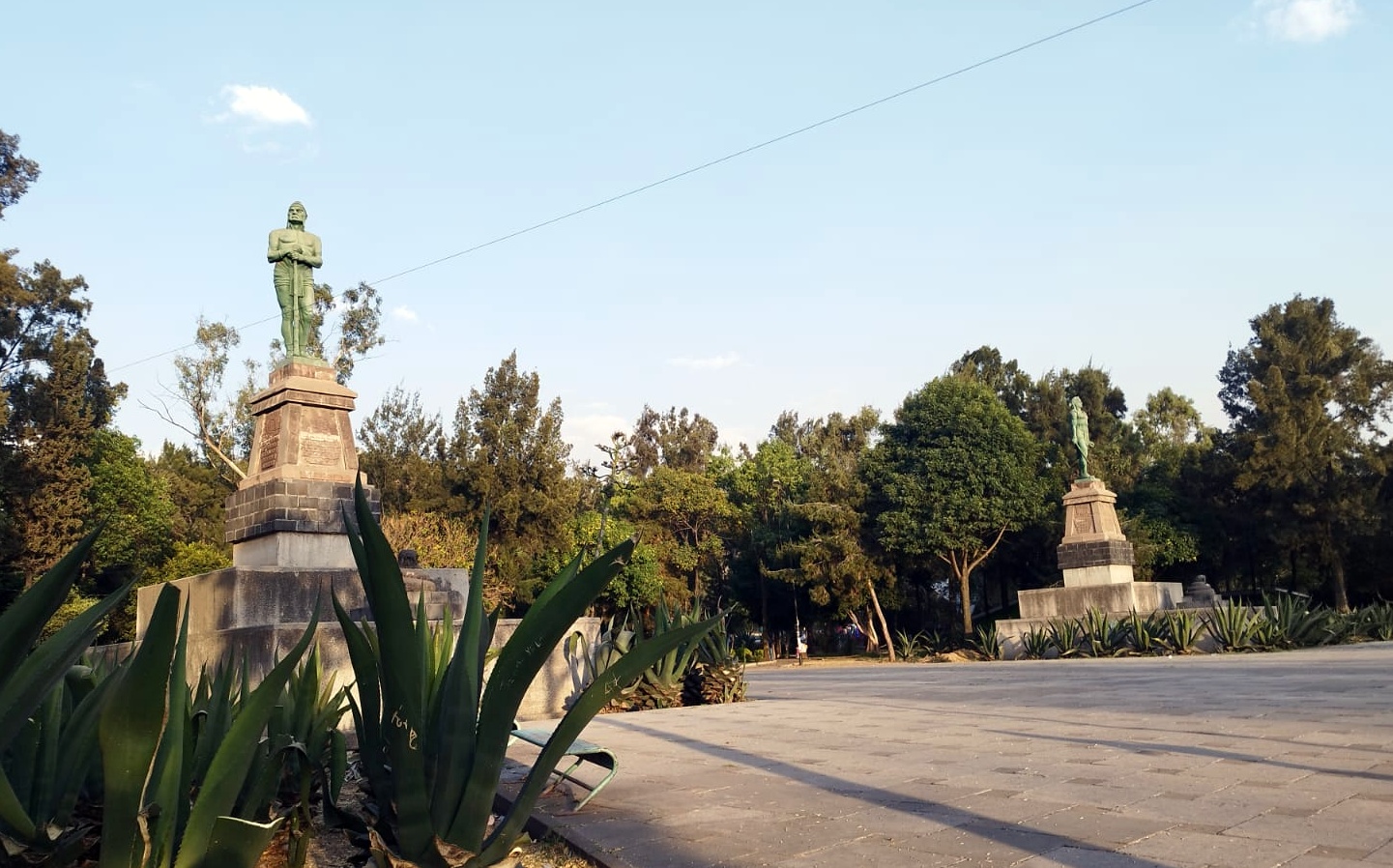

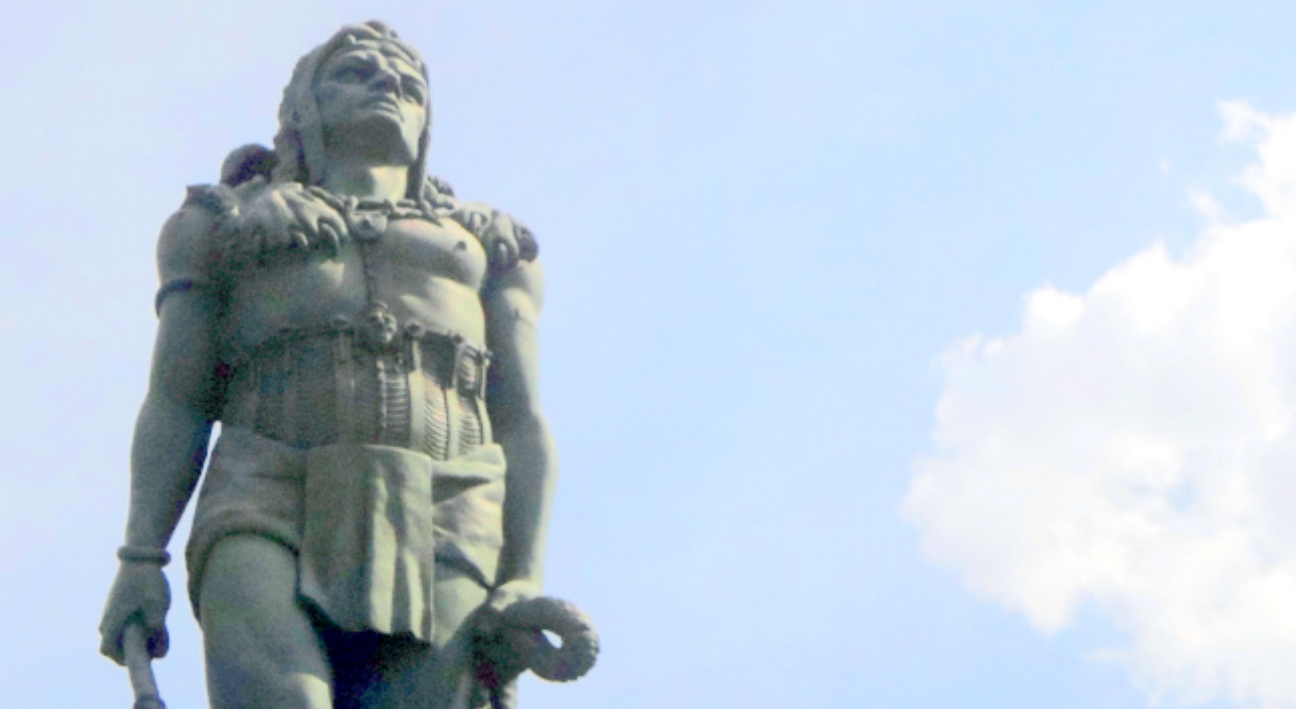
Photos: GAED, Attribution-ShareAlike 3.0 Unported
The Indios Verdes Monument has come to name not just their respective Metro and Metrobus stations. Even beyond that, Indios Verdes can be used to refer to much of the northern region of the city and the metropolitan area.
The two sculptures depict the Mexica Tlatoani (i.e.; Kings), Itzcóatl and Ahuizotl.
Cast in bronze by the artist Alejandro Casarín, they were intended to represent Mexico at the Universal Exhibition in Paris in 1889. The inscriptions and engravings at the bottom of each are in the Nahuatl language.
In the end though, as the two statues are each between three and four meters in height, and as each weighs about 3 tons, it was decided against sending them to France.
Itzcóatl – whose name is sometimes translated as ‘the obsidian snake’ – reigned over Tenochtitlan from 1428-1440. The fourth Tlatoani, he is remembered as a priest, a religious reformer, and as the ruler who overcame the Tepaneca in Azcapotzalco, although his mother was from the Tepaneca people.
Elected Tlatoani in 1427, he is said to have formed alliances with both Tlacopan and Texcoco. In allying with Nezahualcoyotl of Texcoco, Itzcoatl reminded him that the Texcoco ruler had for many years been sheltered in Tenochtitlan. The resulting Triple Alliance, which included Tlacopan (Tacuba), had by 1428, eliminated Azcapotzalco as a serious military rival. Military command was then concentrated in Tenochtitlan.
Under Itzcóatl, the Triple Alliance would, by the 1430s, extend near complete control over the Valley of Mexico. They took Coyohuacan in 1430, Tláhuac in 1433, and Cuauhnáhuac in 1439.
Itzcóatl is also remembered for significant reforms and consolidations made to religious practice and belief during his reign. He was succeeded by Moctezuma Ilhuicamina, i.e.; Moctezuma I
Ahuízotl – whose name is sometimes translated as “river thorns” – was a priest, politician, military leader and the eighth Tlatoani. He ruled from 1486 until his death in 1502. He is mostly remembered for having expanded Triple Alliance rule to cover nearly all of the central and southern territories of present day Mexico, plus Guatemala.
An expert diplomat too, Ahuízotl is known to have expanded trade to include exchange with nearly all of his subject peoples too. His death is thought to have resulted from the failure of an aqueduct he had built to deliver water from Coyoacán to Tenochtitlán. A monolith bearing his inscription was found in the city center only in 2006.
Ahuízotl, was succeed by his nephew Moctezuma Xocoyotzin, i.e.; Moctezuma II.
When the statues were no longer bound for Paris, they were placed first on Paseo de la Reforma in 1890. By 1902, they were transferred to the side of the Calzada de la Viga. By 1920, they were moved again, this time to Insurgentes Norte precisely where the avenue crossed the old Guadelupe Aqueduct. Even there, they’d not be entirely at peace. By 1979, a new Metro station, already with the same name, “Metro Indios Verdes,” meant the namesake statues needed to be moved south. This happened again with the construction of the Metrobus station in 2005, when they were again transferred to nearby El Mestizaje Park.
Never popular works, they were called “green” from nearly the time when the bronze caught its first patina. But with their new home in the Mestizaje Park, literally something like the “Park of Race Mixing” or “Miscegenation Park,” the monument is at last getting something like the second look it deserves. In the company of a number of other major sculptures and works of public art, it’s hard not to ask how these, so prominent and even striking, should have come to be.
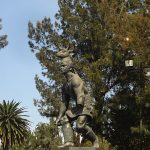
Nearest at 0.07 kms.

Nearest at 0.28 kms.
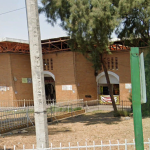
Nearest at 0.36 kms.

One of Mexico City's highest elevation neighborhoods...

New life arrives in one of original villages of la GAM, far in the north of Mexico City.

The transfer station for passengers en route to the final two destinations on Cablebús Line 1.

CablebúsLine One can leave you at the base of the famous Cerro del Chiquihuite...

The Ticomán Cablebús station is just the first stop on your way up to the very north of Mexico City.